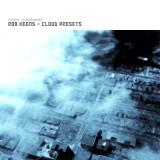In-Tune: Rob Keens

Style: Electronica
"Clouds, also called hydrometeors, consist of water- and ice particles which float in higher spheres and usually do not touch the ground. Furthermore they can contain bigger masses of exhaust gases, smoke and dust. In the year 1802 Luke Howard, a pharmacist from London, classified four main types of clouds: Cumulus, Nimbus, Cirrus and Stratus. Cumulus clouds are big accumulations of fluffy clouds, Nimbus clouds are responsible for rain, Cirrus clouds float in enormous heights opposite to Stratus clouds which are settled in very low spheres. What do clouds symbolize to us? Their origin and meaning has been solved (or is meant to be solved), but when looking at them, we still have some strange feeling inside of us. Clouds form shapes, randomly. Sometimes we notice one or the other cloud looking like something we know. We project our conception of the world onto forms which evolve and diminish at the same time and try to give them a sense while they are completely without meaning. This is a result of our romantic image of existence, that everything has its order and is supposed to be well-conducted. Chaos and randomness are unforeseeable and therefore always tried to be described and categorized. Whether this process of description is done by scientific or creative forces is up to you. Rob Keens makes us looking up to the sky from within our cities or in general from within our human culture. Shadows hover over our skyscrapers, darkening the sun for some few moments or several days and diffuse sunlight to merge light and dark surfaces back together. Besides the loud and rhythmic noises and architectural sound-buildings of our city, we discover wide silky plains, lovely harmonies, complex textures evolving and devolving or just: continuous movement." - Rob Keens
Visit the website:
www.stadtgruenlabel.net
Available at:
www.archive.org
Highlights:
Nimbus
Stratus


<< Home